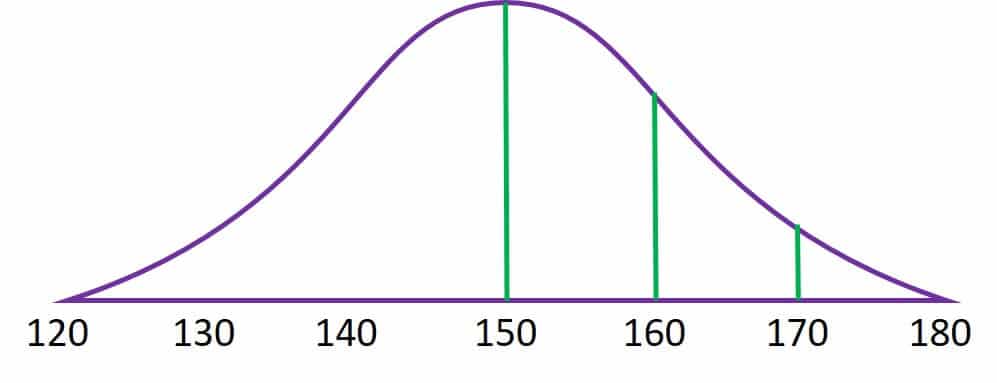The average LSAT score is a 150, but since you’re asking…
Let’s explore LSAT scoring! The LSAT–like all other standardized tests–is scaled. That means when you take the LSAT, the number of questions you answer correctly will be compared to that of every other person who took the test at the same time as you. Then, you’ll be assigned a score that describes how you compared to the other test-takers.
The score you are assigned will fall somewhere on a normal (or bell-shaped) curve, which you can see below. The higher a point is on the curve, the more people are receiving that score on the exam. The lower a point is, the fewer people are receiving that score.

As you may notice, the highest point on the curve occurs smack dab in the middle, at a score of 150. This doesn’t necessarily mean that 150 is the average score (although it’s probably pretty close to it), but it does mean that getting a 150 puts you at about the 50th percentile. In other words, a person who scores a 150 on the LSAT is scoring higher than 50% of the people who took the exam.
Now take a look at where a 160 falls on the curve. Not only are there substantially fewer people getting 160s, but also there is a huge portion of the population scoring lower than 160. In fact, getting a score of 160 on the LSAT would put you at about the 80th percentile.
By the time we get to scores in the 170 range, there is very little room left under the curve. Less than 5% of the population scores in the 170-180 range on the LSAT.
As you prep for the LSAT, keep this curve in mind when setting goals for your own performance. It’s helpful to understand exactly what it means to get a 148 or a 156 or a 164, but it’s even more helpful to understand what improvements in your score can mean to those making admission decisions. If you start out with a 145 and move up to a 160, you’ve moved from about the 30th percentile to the 80th. That means you passed 50% of the test-taking population just from the prep work you put in.
On the other hand, if you start with a 165 and move up to a 170, you’ll move from about the 90th percentile to about the 95th, only passing 5% of the population. Does that mean that you failed to prepare as well as the person who started with a 145? Not at all. The higher your score gets, the tougher your competition and thus the harder it is to make gains. Improving by 5 points at the top of the scale is just as meaningful as improving by 10 or 15 points in the middle of the scale.
If you want to delve into a little more detail about LSAT scoring, check out the post How Does LSAT Scoring Work? for a look at how the number of questions you answer correctly will translate into your scaled score. Also, check out this guide to the LSAT scores for the top 100 law schools!






Leave a Reply